 Are there foods that you have decided you will never eat? I’ll bet there are a few you have made this choice with! Did you make this choice based on taste, cost, maybe health? Some of these foods are not even foods, at least, in a real sense. My criteria for selecting these foods is that they contain unnatural ingredients that are proven to cause health issues if ingested. Let’s take a look at the foods I recommend that you should not eat… well, at least, that I will not eat!
Are there foods that you have decided you will never eat? I’ll bet there are a few you have made this choice with! Did you make this choice based on taste, cost, maybe health? Some of these foods are not even foods, at least, in a real sense. My criteria for selecting these foods is that they contain unnatural ingredients that are proven to cause health issues if ingested. Let’s take a look at the foods I recommend that you should not eat… well, at least, that I will not eat!
1. Soda
Yep, I know I hit a nerve with some of you already! But take a minute to hear me out. Do you know what is in these drinks? You’re right, Sugar! And lots of it. But how about we set that aside since the sugar may be the least of the issues in that can. Skipping past the sugar we come to “Caramel Color” which is often processed with ammonia and sulfur to intensify its color. Maybe you remember that one maker of these drinks just changed their formulation of caramel 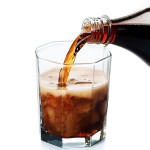 color after it was found it could be a possible carcinogenic. Next… phosphoric acid, that is linked to calcium loss in bones, and tooth erosion, and has been linked to osteoporosis, kidney damage, and kidney stones. There is a positive here… it cleans car battery terminals and the rust off steel.
color after it was found it could be a possible carcinogenic. Next… phosphoric acid, that is linked to calcium loss in bones, and tooth erosion, and has been linked to osteoporosis, kidney damage, and kidney stones. There is a positive here… it cleans car battery terminals and the rust off steel.
Natural flavors come up next on the list. Remember, “natural” used on food labels does not have to mean natural… well… at least in the U.S. This word can be a cover for derived and altered ingredients, that can also contain MSG. Then there are artificial flavors, code name for synthetic mixtures not found in nature. Currently there are over 1,700 of these mixtures listed under the name of “artificial flavors.” Let me just mention a couple of the artificial flavors often found in soda, ethyl methypheylglycidate, and methyl benzoate, both of which are petroleum derivatives. Yup, there be oil in that soda! Oil belongs in the car, not you.
If you still want some soda, try looking at natural made fermented sodas. We make these and have them on those “special days”.
2. Processed Meats
According to the World Cancer Research Fund who just completed a review of more than 7,000 clinical studies covering links between diet and cancer, “…Recommend(s) people avoid processed meat to reduce their bowel cancer risk” Wow, that is some statement. “Avoid” is another way to say don’t eat  again in your life. Sodium nitrate is the big issue they found in red meats. It gives meat its “amazing red color”, adds extra flavor, controls bacterial growth, and preserves food.
again in your life. Sodium nitrate is the big issue they found in red meats. It gives meat its “amazing red color”, adds extra flavor, controls bacterial growth, and preserves food.
Just about all processed meats contain sodium nitrate. Take a look next time you are in the market. See what the ingredients list shows on bacon, sausage, hamburger, salami, hot dogs, even your healthy looking fat free meats are on the list. Don’t worry, they spread it around. So check the labels on your canned soups, and sadly, most kids marketed foods. I am sure I don’t need to mention that it’s in just about all fast food.
The issue with nitrites and nitrates has come to the attention of some processed meat makers, and you can now find products that are nitrite and nitrate free. Just ask at your deli stand or read the labels.
3. Soy
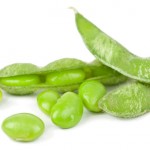 Soy (Edamame) is not the health food it has been made out to be. Soy has been found to cause gastric distress ( indigestion, heartburn, irritable bowel syndrome, constipation and or diarrhea), and it also interferes with mineral and protein absorption. Here is a fact I bet you did not know: Monks used to eat it to dampen their libido. So yes, it is very high in estrogenic compounds. It only takes a few tablespoons to equate to the common birth control pill. Did I mention it often contains MSG when in its processed form?
Soy (Edamame) is not the health food it has been made out to be. Soy has been found to cause gastric distress ( indigestion, heartburn, irritable bowel syndrome, constipation and or diarrhea), and it also interferes with mineral and protein absorption. Here is a fact I bet you did not know: Monks used to eat it to dampen their libido. So yes, it is very high in estrogenic compounds. It only takes a few tablespoons to equate to the common birth control pill. Did I mention it often contains MSG when in its processed form?
Just to be clear, we are talking about non-fermented soy. Fermented soy is what is often eaten in Asia with names such as miso, natto, and fermented soy sauce. These fermented soy products are okay eaten in normal moderation.
4. Margarine/Hydrogenated Oils
These fats (or oils, as they are called), have one thing in common… they are not natural. They are chemically removed, deodorized, and altered. Margarine 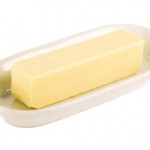 and hydrogenated oils are made up of partially hydrogenated fatty acids, which have been proven to damage arteries and blood vessels, lower good cholesterol, and raise blood levels of triglycerides and lipoproteins leading to cardiovascular damage. Add to these negative issues that they inhibit the utilization of omega 3-fatty acids, which doctors tell us is great for heart health. You know hydrogenated oils as vegetable, corn, etc. cooking oil.
and hydrogenated oils are made up of partially hydrogenated fatty acids, which have been proven to damage arteries and blood vessels, lower good cholesterol, and raise blood levels of triglycerides and lipoproteins leading to cardiovascular damage. Add to these negative issues that they inhibit the utilization of omega 3-fatty acids, which doctors tell us is great for heart health. You know hydrogenated oils as vegetable, corn, etc. cooking oil.
Butter has now been redeemed by doctors, and we are being told it is needed for healthy cell membranes, as well as hormone and vitamin D production. Look for butter made from grass fed cows without rBGH, rBST, or antibiotics. I guess we should have known margarine was an issue when the ants would not even eat it. 😉 Don’t forget to check your labels for hydrogenated oils, since they show up in many foods! Look at that peanut butter label.
5. Ice Cream/Candy
 I hear you! “Come on now, you are after my ice cream and candy! Is nothing sacred?!” Most ice cream and candy is made with artificial flavorings and food dyes. We already mentioned artificial flavorings above in the soda, but how about the artificial colors? Yellow 6, and Red 40, just to mention a couple, are coal tar derivatives. Yes, you heard me. Coal tar. Coal tar is often used in parking-lot coatings, and to hold together asphalt roads. Issues have been raised about coal tar since it is a known to cause cancer in humans, and it is toxic to aquatic life. Now you know what gives some candies the burst of color.
I hear you! “Come on now, you are after my ice cream and candy! Is nothing sacred?!” Most ice cream and candy is made with artificial flavorings and food dyes. We already mentioned artificial flavorings above in the soda, but how about the artificial colors? Yellow 6, and Red 40, just to mention a couple, are coal tar derivatives. Yes, you heard me. Coal tar. Coal tar is often used in parking-lot coatings, and to hold together asphalt roads. Issues have been raised about coal tar since it is a known to cause cancer in humans, and it is toxic to aquatic life. Now you know what gives some candies the burst of color.
If that isn’t enough, then ask yourself this question, “Why does homemade ice cream get as hard as a rock in the freezer?” Homemade ice cream contains only a few ingredients, milk, cream, sugar, flavoring, and eggs. Commercial ice cream uses propylene glycol to keep the freeze under control, which is a chemical compound present in anti-freeze products sold for automobiles.
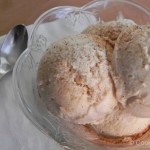 Don’t worry. You can still eat your homemade ice cream. We found a fix for it getting frozen solid in the freezer. Just don’t put it in the freezer to begin with! Eat it all right after it is made! Now, we have a good sized family, so that is not difficult to do. You may just have to share it with your friends. 🙂 We have a few recipes for ice cream here, just do a search. Here is a listing to start.
Don’t worry. You can still eat your homemade ice cream. We found a fix for it getting frozen solid in the freezer. Just don’t put it in the freezer to begin with! Eat it all right after it is made! Now, we have a good sized family, so that is not difficult to do. You may just have to share it with your friends. 🙂 We have a few recipes for ice cream here, just do a search. Here is a listing to start.
It is often not the food that is the problem, but what is put in the food!
 Email To A Friend
Email To A Friend Print This Page
Print This Page

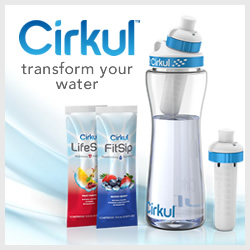
Hi Jeff,
Sorry we have never been able to get together, but I very much appreciate your news letter. It is one of very few things emailed me that I try to take time to read and often forward to friends and family.
Tom
Tom, I know you don’t waste time on things not important to you, I am honored that you value the newsletter enough to share it with others close to you. 🙂 — Jeff
Hi Jeff
Thanks for the post. You are so right. Unfortunately people just accept what is dished up to them on the supermarket shelf and packed up in glitzy advertisements promising convenience, weight loss or best tasting. People have forgotten what real food tastes like and have become complacent in the relationship between their health and food. So articles like yours are great news. Hopefully it will spread far and wide across the internet and people will achieve better health as a result.
Regards
Johanna